
Indoor climbing is now an Olympic sport and all the cool kids are giving it a go, from Aquaman to your Nan. While getting into the sport can seem daunting—especially if you have a fear of heights—the reality is very different to the 'extreme sport' image so often peddled in the mainstream media. Sure, you might go on to become the next Alex Honnold, but even the world's most famous rock climbing free-soloist "learned the ropes" (sorry) indoors.
Climbing centres have become more than just vertical gyms; they're social hubs with wifi and work spaces, cafés with hipster-approved coffees and bars with weekly pub quizzes and burgers. Walls are inclusive, fun places to quite literally hang out with friends and meet new people.
Here's a step-by-step guide to getting into this growing sport that's verging on peak popularity...
Is it for me?
Climbing has something for everyone. Common misconceptions of climbing conflate the indoor discipline with mountaineering, leading many to think that it requires elite-level fitness, expensive equipment and "daredevil" bravery, but indoor climbing can be more accessible—physically and financially—than many other popular activities.
People of all ages, shapes and sizes can climb. Paraclimbing groups can help people with disabilities to try the sport. Unless you have a health condition that prevents you from partaking in strenuous physical activity, climbing is an option for you. If you're unsure, consult with a doctor.
First moves
Choose your indoor climbing wall. There are now over 400 walls across the UK and most major cities have multiple facilities on offer. Check out our UKC indoor climbing wall directory to find a wall near you, or type 'climbing wall near me' into your search engine of choice.
Entry costs vary across the country, but are usually within the range of £8-£15 for a one-off visit. Monthly or annual membership options and punch card offers are available if you catch the climbing bug.
Due to the pandemic, most walls are operating with pre-booking systems or capacity counters, so be sure to visit their website beforehand.
It's worth thinking about which of the two types of indoor climbing you would like to try, since some venues only offer one or the other. Wherever you choose to go, there will beginner-friendly climbs to try with low-angled walls and big holds.
Here's a quick explainer of the two disciplines, just in case one appeals more than the other:
Bouldering
Bouldering is climbing without ropes on short walls around 3-4 metres high above safety mats. If you're not keen on heights, it's potentially the more suitable option and a gentler introduction to getting to grips with climbing without the faff of harnesses or ropes.
Bouldering-only facilities often have cheaper entry prices than walls offering roped climbing alone, or both types. All you need is comfy clothes, a pair of climbing shoes and a chalk bag (optional) containing the white powder to absorb sweat and improve your grip. You can hire these items from most venues for around £2-£4.
A climber friend can easily show you the basic safety rules (try to climb down rather than jumping; bend your knees when you fall; don't climb above people), or a staff member can give a quick introduction to bouldering, after which you can climb unsupervised.
Bouldering can be fun to practise in a social group and is a great way to hone gymnastic-level strength and technique in short bursts of activity. If you're a busy bee, an hour of bouldering is sufficient and easy to fit into your weekly schedule.
Roped climbing
Climbing with ropes enables you to reach higher (up to around 10-25 metres in most indoor facilities) with the help of a partner to hold the ropes, or 'belay' you as you ascend and descend. If you know experienced climbers, they can take you for a taster session and (if you're keen to progress) teach you the safety skills including how to fit a harness, how to tie-in with a special knot and how to belay.
If you don't have any climbing connections, you can book onto a beginners' course, which will give you the skills to climb safely.
Once you're up to scratch, you can register for unsupervised climbing. You can then climb independently at other locations by answering some questions to show that you have the required knowledge.
Beginners start on 'top-rope' climbs, which means that the rope is attached from above and your partner holds the other end of the rope on the ground. Some walls have 'auto-belay' climbs, where a machine at the top does the work of a belay partner, meaning that you can climb alone (this usually requires an induction from a staff member).
Once you've got the hang of top-roping, 'lead climbing' can offer more excitement, as you take the rope up with you and clip it to safety points as you climb.

Top-roping requires a harness, belay kit, climbing shoes and an optional chalkbag (unless you borrow from a friend) and most venues will encourage beginners to rent a helmet for roped stuff, too. Some beginner courses include hire in the class cost, or offer a bundle price. It's usually no more than £5-£10 for these items altogether, likely less.
Climbing with ropes is slightly more equipment-heavy and time-consuming than bouldering, but the mental challenge of climbing higher and puzzling more movements while testing physical endurance offers a different but nonetheless satisfying activity to bouldering.
Kids and climbing
Taster sessions and kids clubs are a great way for little monkeys to engage with a physical activity and make new friends. Most walls offer kids' beginner sessions and weekly clubs catering for all abilities. Minimum age for participation varies between facilities, but most allow entry and taster sessions for children aged 4+, with clubs available for slightly older kids and teens.
Independent climbing is usually restricted to those aged 14+, so young people need to be accompanied by an adult outside of organised kids' sessions.
Charities such as Urban Uprising assist disadvantaged kids in accessing the sport.
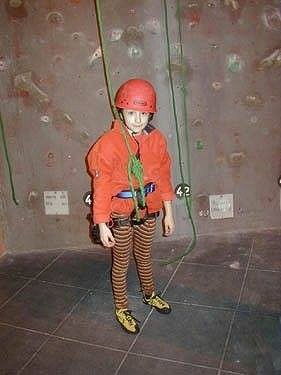
What to wear and bring
Climbers aren't known for their fashion sense, so we won't judge you on what you wear. Whether it's tight and bright, such as yoga or cross-fit/gym wear, or loose and baggy, e.g. combat-type pants or shorts, or joggers/tracksuit bottoms, comfortable leisure clothing in which you can stretch and reach unencumbered will work fine.
Bring a water bottle and some snacks. Eat little and often to top up your energy levels. And of course, make sure someone brings a phone/camera to document your ascents for the 'gram.
Fitting climbing shoes
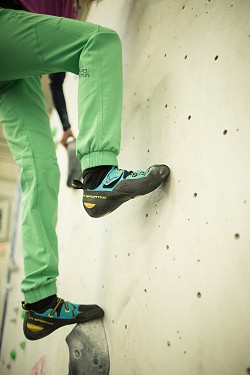
Some people prefer to wear socks for extra comfort, especially when starting out, so don't be put off if you spot more experienced climbers without them. Most rental pairs are fastened by Velcro, which makes it easy and appealing to take them off between climbs and give your toes a break.
On the Wall - The Basics
Warming-up
Like any sport, climbing can be difficult (and pose an injury risk) if you don't warm up your muscles beforehand. Start by raising your pulse, through jogging on the spot, skipping or running. Move on to mobilising your joints, focusing on the shoulders, hips and wrists in particular. Do arm circles, hip circles and wrist circles until you feel loose and ready to go. Open and close your hands to warm up the fingers—they're about to have their work cut out!
Choosing the difficulty level
Whether you're climbing with an experienced friend or with an instructor, they'll start you off on easy-angled walls called 'slabs' before moving on to vertical or overhanging walls.
Indoor climbs are colour-coded and graded by difficulty. The bigger and more positive (incut) the holds are, the easier the climb, broadly speaking. The climbs are built by route setters, who change the routes periodically. They consider the angle of the wall, hold types, their orientation and the distance between to make it easier or harder (yes, they can be evil!) for us.
When starting out, it's easiest to 'rainbow' and use all colours while you learn how to climb. Don't get too focused on the colours or grades, but if you fancy a challenge:
The grading systems are different for boulder problems and roped climbs. Essentially, the higher the number, the harder the climb.
- Most UK bouldering walls use a 'V' system, which ranges from V0 (lowest difficulty) to V17 (off-the-charts difficult, unlikely to exist indoors!). Beginners will generally be comfortable and able to climb V0-V3, depending on their current fitness level and ability.
- Roped routes in the UK are typically graded using a French system, ranging from 1 (easiest level) to 9 (highest level). The system is further differentiated by adding letters a, b and c and '+' to the numbers (it's less complicated than it sounds, honest!). For example, most indoor routes start at around 4 (since 1, 2 and 3 are essentially like climbing stairs), so the sequence in ascending difficulty level runs as follows: 3, 3+, 4, 4+, 5, 5+, 6a, 6a+, 6b, 6b+, 6c, 6c+, 7a, 7a+, 7b, 7b+, 7c, 7c+, 8a...and so on up to 9c (current max outdoors). There is less differentiation at the 3/4/5 level as the technical difficulty is low.
Grading is very subjective and judged by 'feel', usually by taking the physical difficulty of the hardest moves into account. As you progress, you'll start to get a hang of how hard a particular grade feels to you, and you'll start saying things like: 'That's NEVER a 6a+!!! 6b at least!!"
Basic climbing movement - be more sloth!
On the wall, it's tempting to pull in with your arms and grip the holds tightly—try to relax and let your legs (the biggest muscles in your body) do most of the work. Straighten your arms like a sloth, push with your legs and twist your hips; this way, your arm muscles aren't contracting as much and won't get as 'pumped' (climber-speak for 'bloated with lactic acid and fatigued').
It's all in the feet. Try to place your feet carefully and learn to trust the edges of your shoes (where your toes are) rather than placing the centre of your foot over a hold. Using the points or side edges of your shoes enables your to pivot more easily and be more precise with your foot placements. You're part sloth, part ballet dancer.
Try to keep your hips close in to the wall: if your bum is hanging out from the wall, you're putting more weight on your arms! Keeping your hips in will also give you more reach, since your body is closer to the wall.
How do I get back down and what happens if I fall?
These are very common beginner questions. What goes up, must come down. In bouldering, try to climb down as much as possible before jumping onto the mats. If you fall, bend your knees and think like a cat. A friend can 'spot' you—like a gymnastics coach—to stop you from inverting or rolling by carefully directing your upper body as you fall.
In roped climbing, the belayer controls the climber's descent by slowly feeding the rope through both hands using a belay device, which adds friction and makes it easier to hold the climber's weight. It's a bit like abseiling. At the top, or at whichever point you decide to stop climbing, lean back onto the rope and hold the knot with both hands. Keep your feet wide apart to steady yourself and take small steps down the wall as you descend.
If you fall on a top-rope, you won't fall far as the belayer should stop the rope from feeding, leaving you hanging near the spot where you came off. You might swing a little on an overhanging wall, but the fall shouldn't be very dramatic. In lead climbing, you'll fall further (past your last clipping point) but since you'll be top-roping to begin with, lead falls are something to worry about later in your climbing career.
Getting down and falling off are the most intimidating aspects for newcomers (and experienced climbers!), which leads on to...
The Fear Factor
Fear is a natural—and arguably essential—part of climbing. As humans, we're hard-wired to want to be on terra firma, and some level of caution is what keeps us alive. Don't beat yourself up for being anxious or afraid. Even the very best climbers have some degree of fear; it's simultaneously what keeps us safe and what makes completing a challenge feel so rewarding when you overcome it.
Indoor climbing is statistically safer than many other sports. One study concluded that indoor climbing resulted in 0.02 injuries per 1,000 hours of climbing time, compared to surfing (13 per 1,000 hours of surfing; Nathason et al 2007) and rugby (91 injuries per 1,000 hours, Brooks et al 2005). There's a saying in climbing that you're more likely to be injured or killed on the drive to the wall/crag than you are while climbing safely (comforting, isn't it?). This infographic on risk might help to put things in perspective.
What's more, the physical and mental health benefits of participating in a cognitively challenging and highly social activity have been confirmed by multiple studies. Bouldering in particular has been shown to improve mental health. Stepping out of your comfort zone can work wonders for self-confidence: just give it a try!
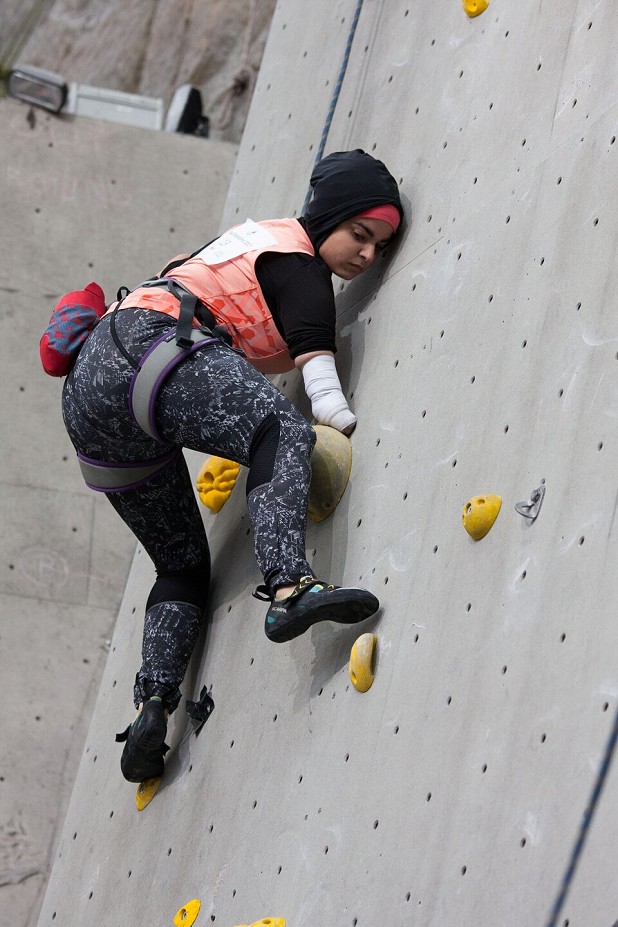
Next steps?
Buying gear
Owning shoes, a harness, chalkbag and belay equipment will work out cheaper in the long term compared to hiring. Most walls have a shop selling equipment. Alternatively, there are various high street and online retailers offering a wider choice.
Shoes start at around £40 for a basic pair similar to the rental style, and can reach up to £130 for more advanced styles (downturned for extra pulling power, special rubbers, etc.). Harnesses start from around £40, chalkbags and chalk (balls, block or powder) together from £15 and belay kits from £20. All of these items apart from the shoes (rubber wears out) should last you a good few years, depending on frequency of use. For lead climbing, ropes start from roughly £40. Kids' equipment is generally cheaper.
While general athletic wear is sufficient for indoors, specialist climbing clothing might be of interest. Many outdoor clothing brands now have indoor and rock ranges, in case you want to look the part.
Finding climbing partners and groups
Once you've had a taste for climbing and you decide that you want more, most walls have regular organised social meet-ups, whether that's to find a partner for roped climbing or a bouldering buddy. Some facilities host ladies' nights or sessions for affinity groups, such as LGBTQ+ or BAME climbers. Some even have speed dating nights, themed climbing parties and fun competitions.
There's usually something catering for all ages, experience levels and abilities. Look out for a notice board with information on meet-ups and events, or check the centre's website and social media.
Project One Climbing (BAME group, London)
CLMBXR (Community for Black and underrepresented groups, London)
Colour Up (BAME group, Bristol)
Asian Climbing Crew (London)
ClimbMuz (social events for Muslim women, London)
ClimbUnity (BAME free coaching initiative, Northern England)
Women's Climbing Symposium (annual climbing event bringing women together)
Women's Bouldering Festival (annual women's bouldering festival in Fontainebleau, France)
Women's Trad Festival (annual women's outdoor climbing event in the UK)
Paraclimbing London (non-profit inclusivity organisation, London)
Climbing for All Sheffield (charity helping disabled children to experience climbing, Sheffield)
Not So Trad (Southern LGBTQ+ group)
Gay Outdoor Club (Northern/Scottish LGBTQ+ groups)
United We Climb (Justice, Equity, Diversity and Inclusion organisation with information and meet-ups throughout England)
Blackdog Outdoors (mental health platform organising indoor and outdoor activities to promote mental wellbeing, nationwide)
Rock Tots (inclusive sessions for young children aged 1-6, Northern England)
Progression courses and private tuition/coaching
If you're keen to improve your movement skills and/or push your grade, book a climbing technique course or hire a personal climbing coach (like a personal trainer, but for climbing). There are options for group improver sessions, 1-2-1 coaching and personal training programs at most facilities, or search online for experts in your area via Mountain Training. Asking wall staff about freelance private coaches who work at their facility can also yield contacts.
Making the move outdoors (if you fancy it)
Not everyone who climbs indoors transitions to rock climbing; indoor climbing is a sport in its own right these days. There may come a point, though, when you fancy turning your hand to real rock. Perhaps a friend will offer to take you out, or you'll become curious about how different it might feel and wonder what adventures are out there to be enjoyed.
Outdoor climbing can be more intimidating than indoors, for obvious reasons. The weather is changeable, the route is less obvious (no coloured holds) and the risks of rockfall or an accident can be higher and more serious, especially if the location is remote. There are also no toilets or cafés outdoors, usually...
As you'll probably have learned through your indoor apprenticeship, climbing is all about solid risk management in order to climb safely and enjoy the experience. You'll be surprised as to what you're capable of if you put your mind to it with proper instruction and support.
Some walls advertise transition to rock courses at local crags. Alternatively, search for a local qualified instructor on the Mountain Training website.
Most importantly, though: don't let anyone pressure you to try outdoor climbing if you don't think it's for you. 'Proper climbing' is whatever makes you happy, whether that's on rock or plastic.
For more information on learning to climb in the UK, visit the British Mountaineering Council's website.
- SKILLS: Top Tips for Learning to Sport Climb Outdoors 22 Apr
- INTERVIEW: Albert Ok - The Speed Climbing Coach with a Global Athlete Team 17 Apr
- SKILLS: Top 10 Tips for Making the Move from Indoor to Outdoor Bouldering 24 Jan
- ARTICLE: International Mountain Day 2023 - Mountains & Climate Science at COP28 11 Dec, 2023
- ARTICLE: Did Downclimbing Apes help Evolve our Ultra-Mobile Human Arms? 5 Dec, 2023
- ARTICLE: Dàna - Scotland's Wild Places: Scottish Climbing on the BBC 10 Nov, 2023
- INTERVIEW: Loki's Mischief: Leo Houlding on his Return to Mount Asgard 23 Oct, 2023
- INTERVIEW: BMC CEO Paul Davies on GB Climbing 24 Aug, 2023
- ARTICLE: Paris 2024 Olympic Games: Sport Climbing Qualification and Scoring Explainer 26 Jul, 2023
- INTERVIEW: Malcolm Bass on Life after Stroke 8 Jun, 2023




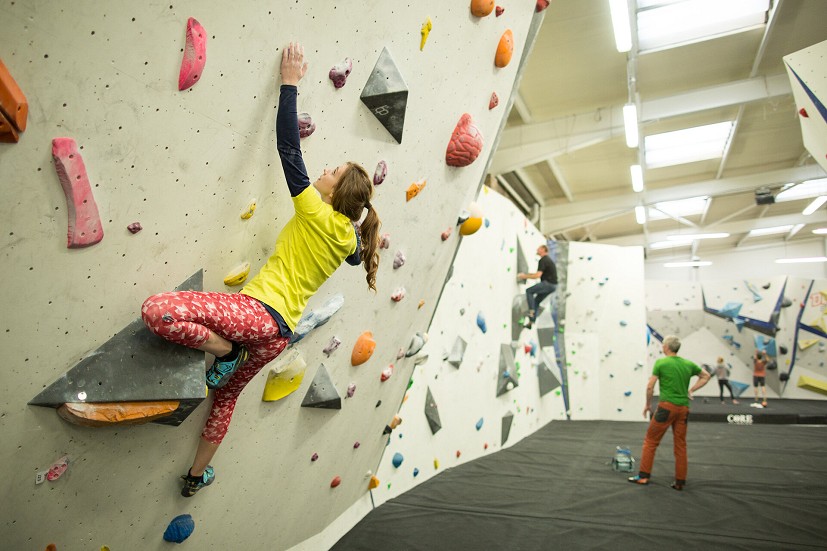
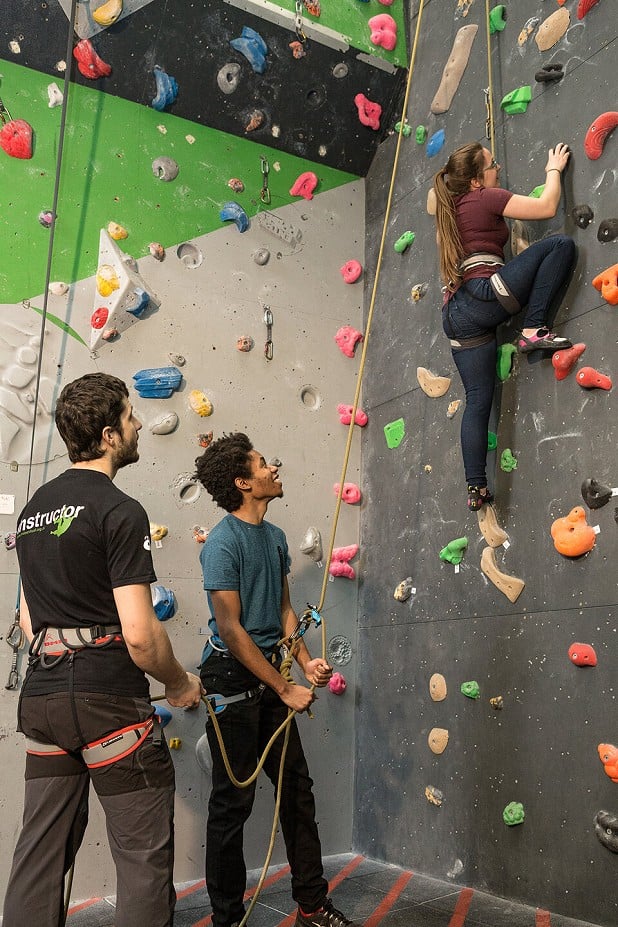

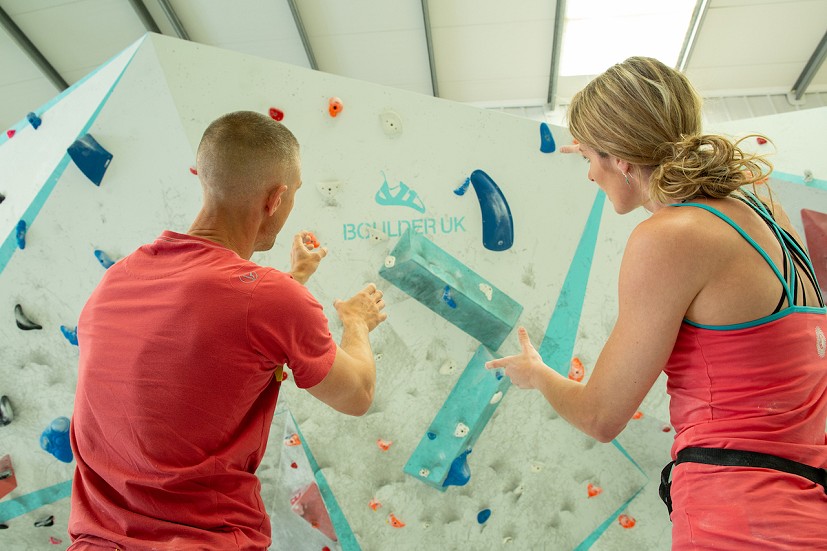



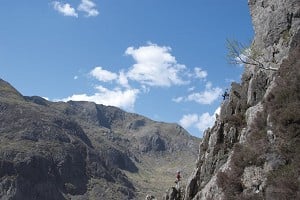









Comments
Nice article Natalie - though any beginner who can climb V3 should keep it to themselves as that kind of thing just makes me feel bad!
Indeed, a really nice article.
as for the grade one climbs tge first time they try climbing. Well, V1 to V3 is pretty spot on or common. Outliers exist, such as one keen teen who started tickin’ V6s (and the grades weren’t soft at that place, I often have more change of flashing a V5 outdoors than a V4 at that gym).